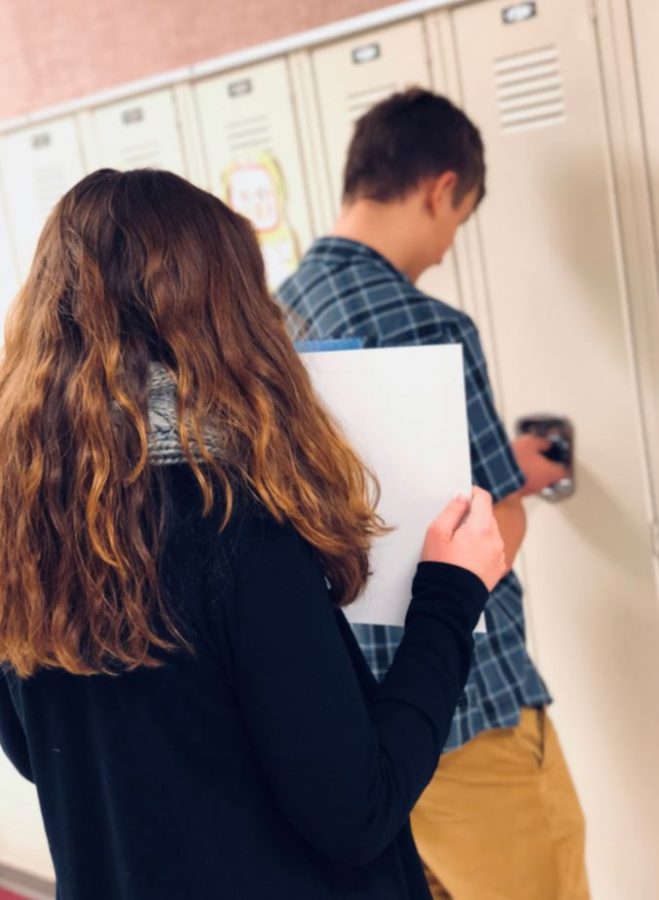The stereotypes behind the TWIRP dance
February 14, 2018
With February beginning, Valentine’s Day-inspired dances and events are in full swing. At LTHS, one of the biggest events at this time is the annual TWIRP dance, named by the acronym “The Woman Is Requested to Pay.”
While the dance comes with many names around the country – TWIRP, sweethearts, Sadie Hawkins, Turnabout – all share one key characteristic that makes them stand out from all other typical high school events: This dance is all about the girls holding the responsibility to do everything regularly considered ‘“the boy’s job.” Technically speaking, a girl can ask a date to a dance or pay for their ticket any time; however, at a dance like TWIRP, there is a literal expectation. Not only must a girl pay for the tickets, it’s also typically expected that a girl asks a boy to the dance with an elaborate TWIRP-posal.
According to Casey Lewis of Live About, the idea of a “Sadie Hawkins” dance was inspired by Sadie Hawkins Day, which derived from a comic strip series. In short, the 1937 satirical comic Li’l Abner, written by Al Kapp, showcased a special day in which single women chased bachelors around towns, and if a bachelor was caught, he’d immediately be married to the woman caught him. As the story goes, Miss Sadie Hawkins couldn’t wait for the one day she could choose her man; thus, the ‘holiday’ and consequent dance was born.
Not only is this stereotype pressing the idea that girls should always play a secondary and receiving role, the idea of the TWIRP dance may put pressure on male students to pick up these stereotypes in every other big situation, like marriage proposals, paying for a date, asking a girl out, etc.
Furthermore, a dance like TWIRP completely overshadows non-heterosexual students by making everything about a girl and a boy. You may be asking why this is such an issue. If I asked you to imagine a prom proposal, what would you imagine first? A young boy asking his boyfriend to be the highlight of his prom? How about two girls? For the majority of people this wouldn’t be the first to come to mind, and I believe this point stems back to the deeply heterosexual bias that we see growing up in media and everyday life.
Looking into the history of these dances, it is easy to see that at one point this was a big step forward. At one point expecting a girl to ask a boy to a dance and pay for a ticket was one huge accomplishment for women, but in today’s society when we have proven we can do equal work, keeping something like this dance around – which focuses on the idea that women need an excuse to be forward and ‘powerful’ – actually feels like a step back.
The biggest question is why is this outdated and trivializing event still recognized and celebrated in modern high schools across the country? I believe it has much to do with routine. From the amount of participants, it is safe to assume most students don’t see an issue with the dance. So I don’t believe this is an issue of one dance at one school. Taking away TWIRP or changing the name would do more harm than good. Thus, this issue goes deeper within the stereotypes that have grown with American people, and we can’t change them all.
One thing for sure, the concept of a dance like TWIRP holds many of the stereotypes women have fought to erase for decades on a tight and sparkly shelf; however, the history or tradition of a dance shouldn’t stop you from having fun and enjoying your high school experience. Although the name and idea of TWIRP can be seen as distasteful to some, use it as an opportunity to see how far we have come, as well as how far we still have to go.
*Since the publication of this editorial, the definition of the “r” acronym in TWIRP has been rectified from ‘required’ to ‘requested’.






Jessica Chavez • Feb 14, 2018 at 6:53 pm
TWIRP actually stands for The Woman Is Requested to Pay, we aren’t technically required. I for example just went halves on our tickets. We agreed to buy our own.